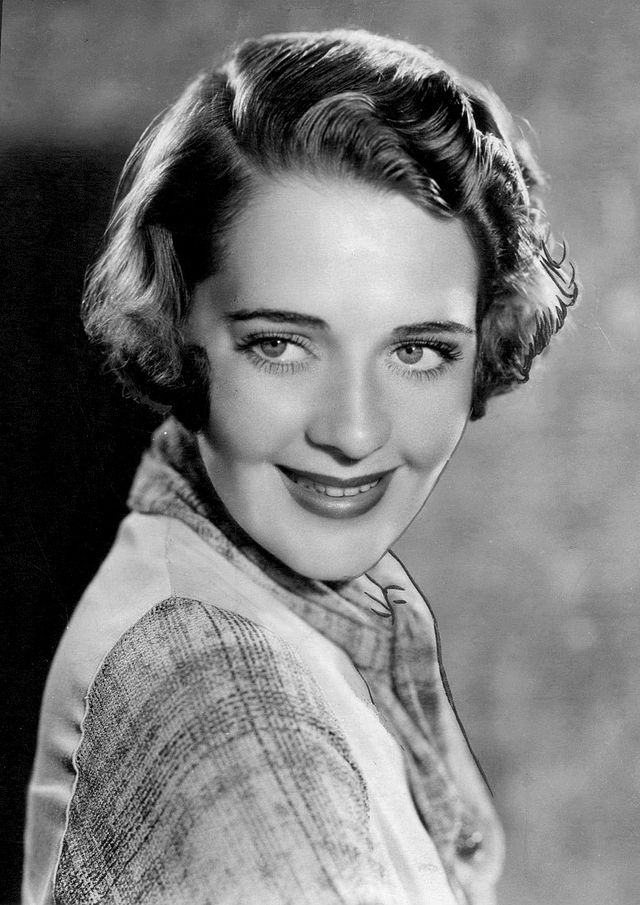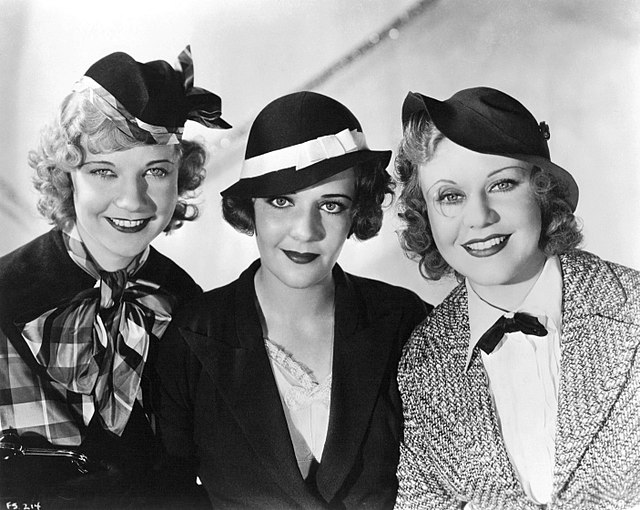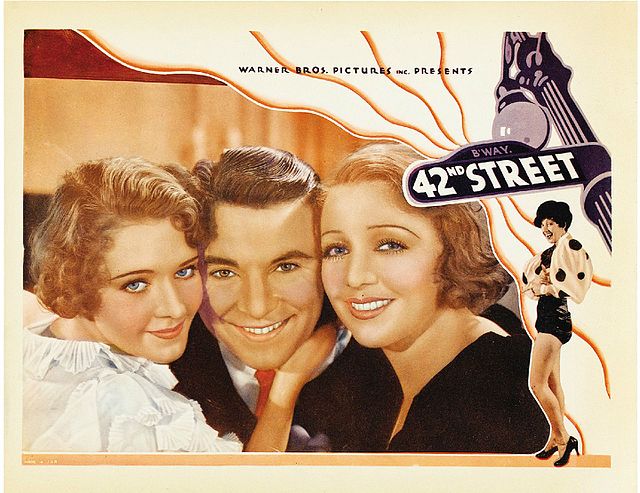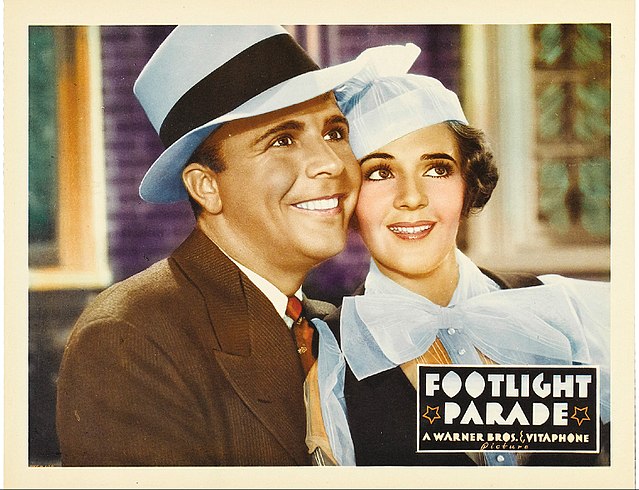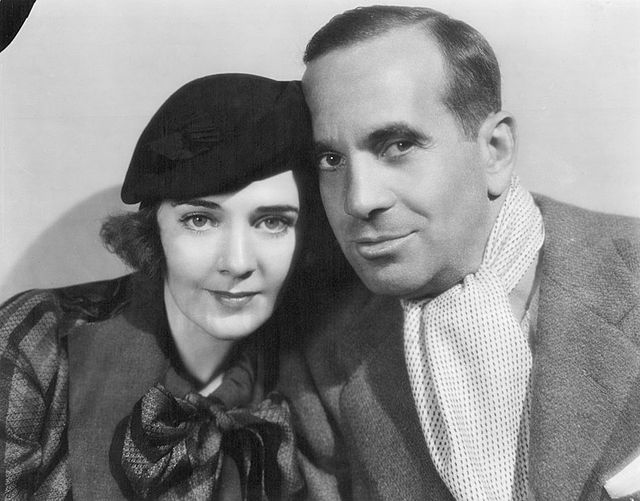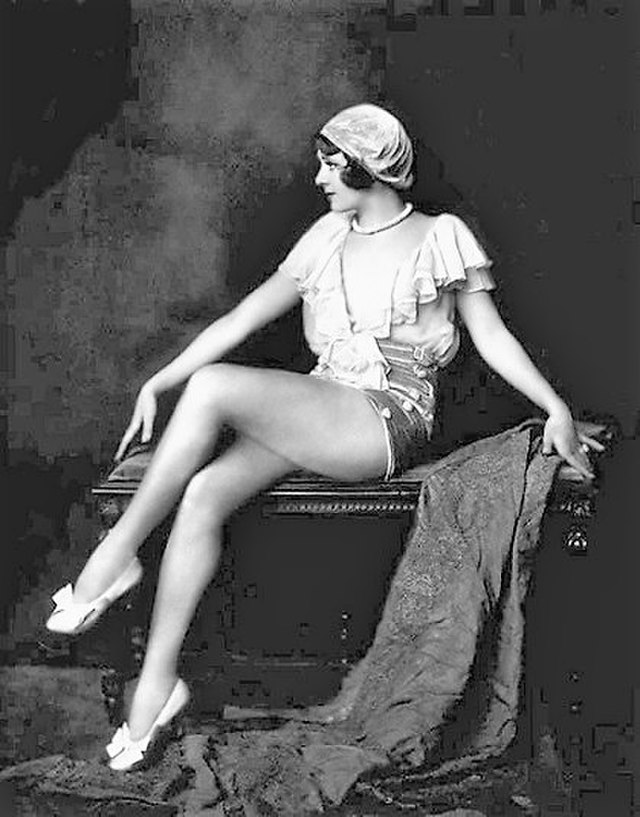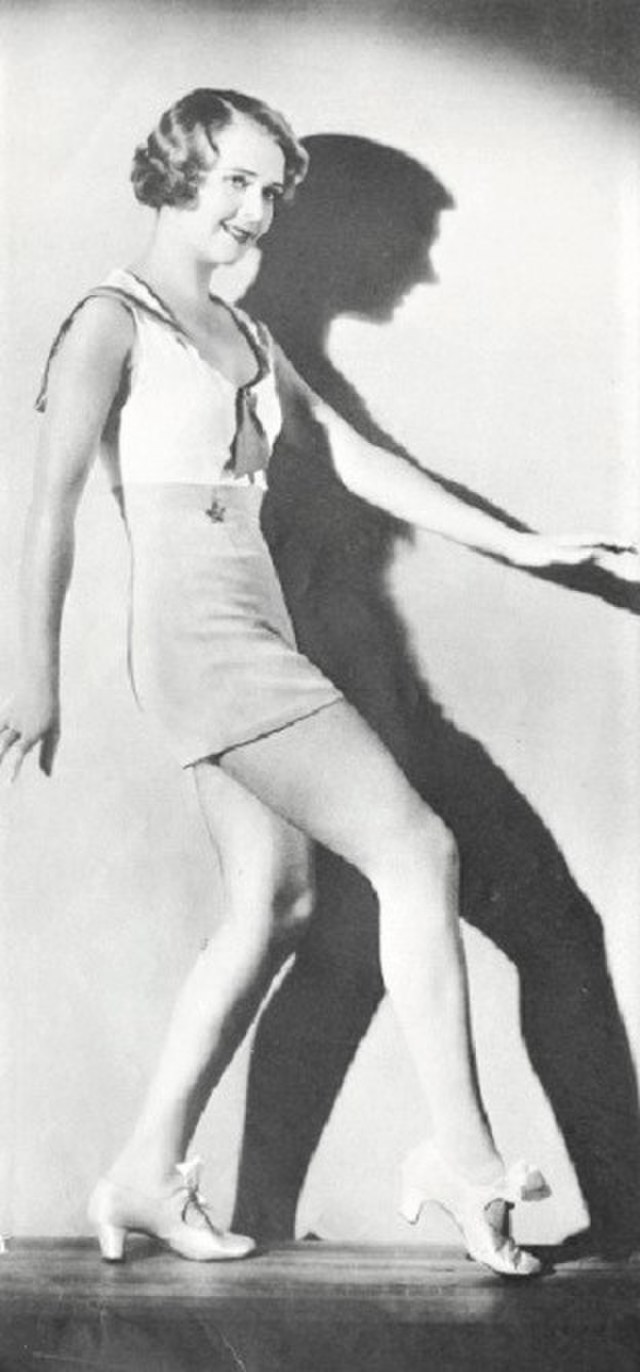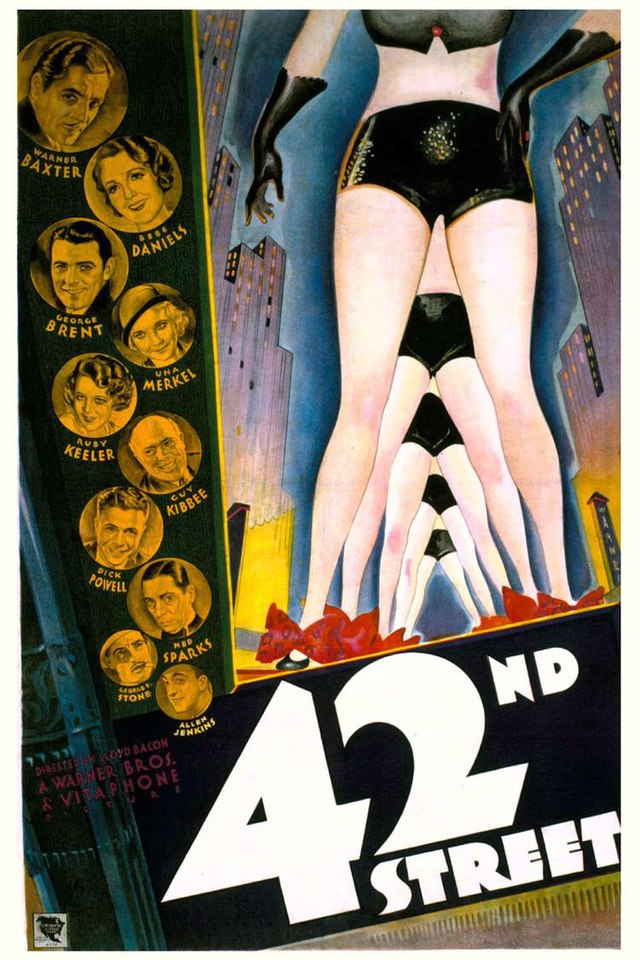Ruby Keeler
back| Full Name | Ethel Hilda Keeler |
| Stage Name | Ruby Keeler |
| Born | August 25, 1909 |
| Birthplace | Dartmouth, Nova Scotia, Canada |
| Died | February 28, 1993 |
| Buried | Holy Sepulchre Cemetery, Orange, California, USA |
| Married to | Al Jolson (m. 1928, div. 1940) - John Homer Lowe (m. 1941, d. 1969) |
| Children | John Lowe Jr.- Gerrie Lowe - Kathleen Lowe - Patrick Lowe |
| Notable films | 42nd Street (1933) - Gold Diggers of 1933 (1933) - Footlight Parade (1933) - Dames (1934) - Colleen (1936) |
Ruby Keeler
The Tap-Dancing Darling of the Depression Era
Ruby Keeler (1909–1993) was a Canadian-born actress and tap dancer who rose to fame during the Great Depression as the star of Warner Bros. musicals. Known for her earnest charm and spirited tap dancing, she became an iconic figure with hits like 42nd Street (1933) and Gold Diggers of 1933. Born in Dartmouth, Nova Scotia, she grew up in New York City, where she began her career in nightclubs before transitioning to Broadway and film.
Her marriage to Al Jolson brought significant public attention, though they divorced in 1940. After retiring in 1941 to raise a family, she made a triumphant return in the Broadway revival of No, No, Nanette (1971), earning critical acclaim.
Related
Ruby Keeler (1909 – 1993)
Biography and Movie Career
Early Life:
Ruby Keeler was born on August 25, 1909, in Dartmouth, Nova Scotia, Canada, to Irish Catholic parents. When she was a child, her family moved to New York City, where she grew up in a working-class neighborhood. She developed an interest in dancing at a young age and began learning tap dancing. She eventually joined a nightclub dance troupe, where her talent caught the attention of Broadway producers.
Broadway Beginnings:
Keeler's big break came when she was cast in Broadway musicals, gaining recognition for her spirited dancing and charming stage presence. She quickly became a favorite in the Ziegfeld Follies, a launching pad for many stars of her era.
Film Career:
Ruby Keeler made her Hollywood debut in 1933 with 42nd Street, a film that became an iconic backstage musical and catapulted her to stardom. She was praised for her tap-dancing skills and relatable, down-to-earth charm. Keeler went on to star in a string of Warner Bros. musicals, including Gold Diggers of 1933, Footlight Parade, Dames, and Colleen.
Keeler became synonymous with the Busby Berkeley musicals, known for their intricate and dazzling dance numbers. Her "girl-next-door" persona made her immensely popular during the Great Depression, offering audiences a sense of hope and escapism.
Personal Life:
Ruby married famous entertainer Al Jolson in 1928. Their marriage was highly publicized but ended in divorce in 1940. In 1941, she married John Homer Lowe, a successful real estate executive, with whom she had four children.
Later Years:
After retiring from film in the late 1930s, Ruby focused on raising her family. In the 1970s, she made a successful stage comeback in the revival of No, No, Nanette (1971), earning rave reviews and proving her enduring appeal.
Death:
Ruby Keeler passed away on February 28, 1993, at the age of 83, due to cancer. She is remembered as one of Hollywood's most beloved stars of the 1930s and a pioneer in the movie musical genre.
Would you like additional details on any aspect of her life or career?
Ruby Keeler Tapdancing on Giant Typewriter
Ruby Keeler’s acting style
Relatable and Grounded Persona
Ruby Keeler often portrayed characters who were underdogs, dreamers, or everyday women thrust into extraordinary circumstances. Her performances were marked by a sincere, unaffected quality that made her relatable to the audience. She wasn’t flashy or overly dramatic; instead, her charm lay in her genuineness, making her a perfect fit for the down-to-earth tone of many Warner Bros. musicals.
________________________________________
Innocent and Optimistic Charm
Keeler brought a sense of optimism and innocence to her roles. Her characters often embodied hope, resilience, and determination—qualities that mirrored the struggles of many during the Great Depression. This aura of optimism was reinforced by her wide-eyed expressions and a slight hesitancy in her delivery, which made her seem approachable and genuine.
________________________________________
Understated Acting with Emphasis on Movement
Her acting was subtle and often understated, allowing her dance performances to take center stage. Keeler’s background as a tap dancer significantly influenced her acting, as she often conveyed emotion through movement rather than through overt facial expressions or dialogue. Her physicality was integral to her performances, particularly in scenes that showcased her tapping talent.
________________________________________
Naïve Sophistication
Keeler had a unique ability to balance a sense of naivety with moments of sophisticated allure. She could transition from an unassuming "girl-next-door" to a polished performer on stage, embodying the transformative journey often central to her characters’ arcs. This duality contributed to the compelling nature of her roles.
________________________________________
Modest Yet Magnetic Presence
Though she lacked the dramatic flair of some of her contemporaries, Keeler’s reserved style was magnetic in its authenticity. She let her personality shine through her performances, making her characters believable and heartfelt. Her quiet charisma allowed her to stand out in ensemble casts without overshadowing her co-stars.
________________________________________
Vocal Delivery
Keeler’s soft-spoken, almost hesitant delivery of lines added a vulnerable quality to her performances. While she wasn’t known for her singing voice in the way some of her contemporaries were, her vocals carried an untrained, natural charm that suited her unpretentious characters.
________________________________________
Criticisms
Some critics at the time noted that her acting lacked the polish or range of more seasoned performers. Her delivery could be awkward at times, and she sometimes appeared more comfortable dancing than emoting through dialogue. However, this perceived lack of polish also added to her unique appeal, as it made her stand out from the more refined stars of her era.
Awards and Recognition
Theatre World Special Award (1971)
• Ruby Keeler received this prestigious honor for her triumphant stage comeback in the revival of No, No, Nanette. Her performance was widely celebrated as a nostalgic and inspiring return to the spotlight, solidifying her legacy as a star of both stage and screen.
________________________________________
Golden Palm Star on the Palm Springs Walk of Stars (1992)
• In recognition of her contributions to the arts, Ruby Keeler was awarded a star on the Palm Springs Walk of Stars. This honor celebrated her enduring influence on Hollywood and the musical genre.
________________________________________
Hollywood Walk of Fame Star
• Ruby Keeler was honored with a star on the Hollywood Walk of Fame for her achievements in motion pictures. The star is located at 6730 Hollywood Boulevard. This is a testament to her impact on the film industry, particularly during the golden age of musicals.
________________________________________
Induction into the Tap Dance Hall of Fame (2004, posthumously)
• Although this recognition came after her death, Ruby Keeler was inducted into the Tap Dance Hall of Fame for her iconic contributions to tap dance in Hollywood musicals. Her performances in films like 42nd Street and Gold Diggers of 1933 helped popularize tap dance as a central feature of American film musicals.
________________________________________
Recognition During Her Lifetime
• Broadway Revival Acclaim (1971–1972): Ruby Keeler’s role in the Broadway revival of No, No, Nanette earned her renewed admiration from critics and audiences alike. While she did not receive a Tony nomination, the success of the production was often attributed to her charm and nostalgic appeal.
• Depression-Era Icon: During the 1930s, Keeler was widely celebrated by audiences as a symbol of hope and resilience. Although awards for film performance were less common in her era, her cultural impact was undeniable.
________________________________________
Posthumous Recognition
• Ruby Keeler continues to be celebrated as one of the great stars of Hollywood’s golden age, particularly in the realm of musicals. Retrospectives of her work often highlight her as a trailblazer in bringing tap dance and relatable, hardworking characters to the screen.
Personal Quotes
On Her Career
• "I wasn't a great dancer. I was just a tapper."
o This self-effacing remark highlights her modesty and down-to-earth attitude, despite her significant role in popularizing tap dancing in Hollywood musicals.
• "I did everything Fred Astaire did, only backwards and in high heels."
o Although this phrase is often attributed to Ginger Rogers, Ruby Keeler humorously used it to describe her own experience as a female tap dancer in the male-dominated world of 1930s Hollywood choreography.
________________________________________
On Her Fame
• "When you talk about my life, you’re talking about a miracle. It’s a miracle that I was in the right place at the right time."
o Ruby expressed gratitude for her success, attributing it as much to luck as to her talent, reflecting her grounded outlook.
• "I had no training in dancing. I just sort of felt it and did it. I guess you could say I got by on personality."
o This quote encapsulates her belief that her charm and enthusiasm carried her through, even in a highly competitive industry.
________________________________________
On Returning to the Stage
• "I never thought I'd ever be on stage again. It feels like a dream."
o Keeler shared this sentiment during her comeback in No, No, Nanette in 1971, capturing her awe and joy at being welcomed back into the spotlight after decades of retirement.
________________________________________
On Hollywood
• "It was the Depression, and we gave people a little escape. I think that's why the musicals were so popular."
o Ruby’s insight into the role of musicals during the 1930s reflects her understanding of the cultural impact of her work.
________________________________________
On Herself
• "I’m not a legend. I’m just me."
o This simple, humble quote embodies her personality and how she viewed her legacy—without pretense or self-importance.
Movies with Ruby Keeler
1933
• 42nd Street
Ruby Keeler stars as Peggy Sawyer, an aspiring Broadway actress who gets her big break when the leading lady is injured. The film is a quintessential backstage musical with iconic Busby Berkeley dance sequences.
• Gold Diggers of 1933
Playing Polly Parker, Keeler helps a group of showgirls outwit wealthy men to stage a Broadway show during the Great Depression. Features memorable musical numbers, including "We're in the Money."
• Footlight Parade
As Bea Thorn, Ruby joins a team of performers staging elaborate "prologues" for movie theaters. The film is packed with stunning choreography by Busby Berkeley and showcases Ruby’s tap-dancing skills.
________________________________________
1934
• Dames
Keeler plays Barbara Hemingway, who is caught between family obligations and her desire to perform in a lavish Broadway show. This film features standout numbers like "I Only Have Eyes for You."
________________________________________
1935
• Sweet Music
Ruby Keeler stars as Annette, a dancer who partners with crooner Rudy Vallee in this light-hearted romantic comedy featuring music, misunderstandings, and lots of dancing.
• Go into Your Dance
Teaming up with then-husband Al Jolson, Keeler plays Dorothy Wayne, a dancer who helps her singer brother relaunch his career. This marks their only film together.
________________________________________
1936
• Colleen
Keeler stars as Colleen Reilly, a secretary who finds herself at the center of a love triangle involving a wealthy family. A romantic comedy with a charming mix of music and dance.
• The Singing Kid
Ruby plays Susie, a talented dancer helping a washed-up singer (played by Al Jolson) rebuild his career. The movie blends humor, music, and drama.
________________________________________
1937
• Ready, Willing and Able
Ruby Keeler portrays Jane Clarke, a hopeful actress trying to land a role in a Broadway show. Features the inventive "Too Marvelous for Words" tap dance number.
________________________________________
1941
• Sweetheart of the Campus
Keeler plays Betty Blake, a college student determined to save her school’s music program. It’s a lighthearted musical set against a collegiate backdrop.

